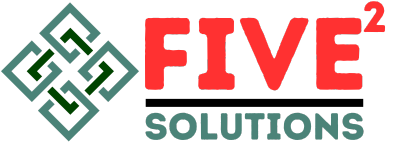
A brief introduction to the philosophy of prioritizing building and creating over managing. This approach emphasizes the importance of hands-on involvement and innovation at all levels of the organization, driving growth and efficiency by empowering those who are directly engaged in the work.
Empowering your teams is essential in the modern, fast-paced tech landscape to spark innovation and ensure quick responses. Autonomy fosters trust and ownership, driving creativity and risk-taking.
Such empowerment boosts morale and agility, enabling rapid iteration and improvements based on feedback. This leads to a more engaged team capable of delivering significant value efficiently, ensuring competitiveness and customer satisfaction.
This simple yet effective strategy enhances outcomes and propels your company forward, demonstrating the profound impact of team empowerment on overall business success.
Streamlining organizations to boost responsiveness involves eliminating unnecessary bureaucracy and simplifying hierarchical structures, prioritizing action over extensive management. This approach aims to shift the organizational focus towards more direct and productive activities.
Minimizing management layers not only accelerates decision-making processes but also cultivates an environment of empowerment and accountability. Such a structure promotes efficient communication and teamwork, allowing for swift adaptation to new challenges and opportunities.
The outcome of streamlining is a flexible, responsive organization where innovation is a priority, and the collective effort is dedicated to creating value. This strategic shift gears the organization towards enhanced agility, making it well-equipped to navigate the complexities of the modern market with confidence.
Encouraging cross-functional collaboration among sales, marketing, product, technology, and operations teams drives innovation and efficiency. This method dismantles silos, synchronizes departmental goals, and utilizes varied expertise for enhanced problem-solving, fostering an integrated approach to work.
Such collaboration ensures that products and solutions are both technically robust and market-aligned, accelerating development cycles and boosting market responsiveness. Cultivating an environment of open communication, mutual respect, and collective goals is essential for harnessing diverse skills and perspectives.
Embracing cross-functional collaboration not only improves decision-making but also secures a competitive edge in todays fast-paced market. This strategic integration promotes a dynamic, agile business capable of innovative solutions and rapid adaptation to market changes.
Creating small, empowered, and high-trust teams is essential for achieving agility and fostering innovation in a fast-paced world. Small team sizes facilitate rapid communication and decision-making, while empowerment grants team members the autonomy needed for quick, effective action, boosting both judgment and execution speeds.
High trust within teams enhances open communication, encourages risk-taking, and builds a strong sense of ownership and responsibility. This environment significantly improves problem-solving capabilities, accelerates outcomes, and nurtures a culture of motivated individuals dedicated to excellence.
Teams characterized by high trust and empowerment become the cornerstone of productivity and creativity, driving the organization towards greater success with efficiency and innovation. This strategic approach positions your company to excel in the competitive landscape, powered by a culture that values trust, agility, and innovation.
Embedding continuous learning into the fabric of your organization is key to staying agile and competitive in today's ever-evolving business and technological landscape. A culture that prioritizes learning equips your team with cutting-edge skills and encourages innovation.
Through online courses, workshops, knowledge-sharing sessions, and mentorship, you can enhance both individual skills and collective knowledge. These learning initiatives not only improve problem-solving and creativity but also increase employee satisfaction and retention.
Focusing on continuous learning makes your organization more adaptable, resilient, and capable of embracing new trends and technologies, giving you a distinct competitive advantage in the marketplace.